Birmingham Canal Navigations
Birmingham Canal Navigations (BCN) is a network of canals connecting Birmingham, Wolverhampton, and the eastern part of the Black Country. The BCN is connected to the rest of the English canal system at several junctions.
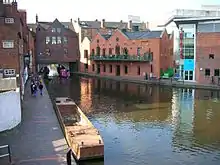
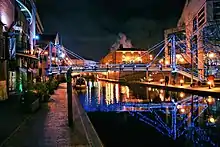
At its working peak, the BCN contained about 160 miles (257 km) of canals; today just over 100 miles (160 km) are navigable, and the majority of traffic is from tourist and residential narrowboats.
History
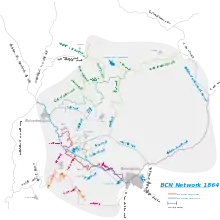
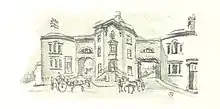
The first canal to be built in the area was the Birmingham Canal, built from 1768 to 1772 under the supervision of James Brindley from the, then, edge of Birmingham, with termini at Newhall Wharf (since built over) and Paradise Wharf (also known as Old Wharf) near to Gas Street Basin to meet the Staffordshire and Worcestershire Canal at Aldersley (north of Wolverhampton).
The Birmingham and Fazeley Canal, from Birmingham to Tamworth, followed in 1784 with the Birmingham Canal Company merging with the Birmingham and Fazeley Canal Company immediately, to form what was originally called the Birmingham and Birmingham and Fazeley Canal Company. This cumbersome name was short-lived, and the combined company became known as the Birmingham Canal Navigations from 1794, as the network was expanded.
Levels
The BCN is built on three main levels, each with its own reservoir.
- 453 feet (138 m) OD, the Birmingham Level;
- 473 feet (144 m) OD, the Wolverhampton Level;
- 408 feet (124 m) OD, the Walsall Level
These levels are linked by locks at various places on the network.
There are also stretches on their own levels.
- The Titford Canal and its branches were built at 511 feet (156 m) OD, linked to the Titford Reservoir (Titford Pool). A feeder supplies water to the Edgbaston Reservoir.
- A short section of the BCN Old Main Line, at Smethwick Summit, was built at 491 feet (150 m) OD. Pumps at either end were built to pump water used by the locks back to the summit – one at Spon Lane locks, and one at Smethwick locks: the Smethwick Engine. When the summit became too busy John Smeaton designed a scheme where it was lowered by 18 feet (5.5 m) to the Wolverhampton level, eliminating six locks and providing a parallel set of locks at Smethwick which improved traffic throughput. It also linked to the general Wolverhampton Level supply of water.
The canals of the BCN
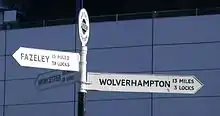
- BCN Main Line (originally known as the Birmingham Canal) from Aldersley Junction (north of Wolverhampton) to Gas Street Basin (at the Worcester Bar in central Birmingham), using some of the Old Main Line canal.
- Old Main Line, originally terminating in Birmingham at two wharfs now built upon: Old Wharf (adjacent to Gas Street Basin) and Newhall Wharf.
- New Main Line, a revised route for the Birmingham Canal, double towpathed, largely progressing in straight lines using cuttings and tunnels.
- Bentley Canal (abandoned)
- Birmingham and Fazeley Canal (from Old Turn Junction (by the National Indoor Arena), eastwards to the Coventry Canal at Fazeley Junction, and thence north-west as far as bridge 78.)
- Bradley Locks Branch
- Dudley Canal
- Bumble Hole Branch Canal (part of a bypassed loop)
- Dudley Canal Line No 1 (see also Dudley Tunnel)
- Dudley Canal Line No 2 (about half dewatered; see also Lapal Tunnel; Netherton Reservoir)
- The Two Locks Line (infilled)
- The Engine Arm
- Gower Branch Canal - linking the Birmingham and Wolverhampton levels, via three locks, at Tividale.
- Icknield Port Loop (part of the Old Main Line cut off by Telford's improvements, now serving as a feeder from Edgbaston Reservoir)
- Netherton Tunnel Branch Canal
- Rushall Canal
- Soho Loop (an old circuitous route cut off by Telford's improvements, originally with a branch, the Soho Branch to Soho Wharf, serving the Soho Manufactory)
- Spon Lane Locks Branch (between Bromford Junction and Spon Lane Junction on the Old Main Line - 3 locks, part of the original Wednesbury Canal, not to be confused with Spon Lane Branch, another name for Tat Bank Branch on the Titford Canal)
- Titford Canal
- Tame Valley Canal (a later canal cutting off some northern meanders)
- Walsall Canal (a more modern canal connecting the main line with Walsall and forming a big northern loop with the Wyrley and Essington Canal)
- Anson Branch
- Walsall Branch Canal (Town Branch)
- Wednesbury Oak Loop (part of the original Old Main Line, now incomplete)
- Wednesbury Old Canal - part of the original Wednesbury Canal
- Wyrley and Essington Canal (bought by the Birmingham Canal Navigations in 1840)
- Anglesey Branch
- Birchills Branch
- Cannock Extension Canal
- Daw End Branch Canal
- Lord Hay's Branch (Lords Hayes Branch) (abandoned)
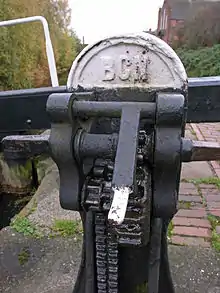
Linking canals
- Coventry Canal (at Fazeley Junction)
- Grand Union Canal (connects at Salford Junction and also Bordesley Junction (originally Warwick Bar)
- Staffordshire and Worcestershire Canal (at Aldersley Junction)
- Stourbridge Canal
- Worcester and Birmingham Canal (connects the BCN Main Line at the Worcester Bar, (alongside Gas Street Basin), southwards, to the River Severn at Worcester)
Associated features
- Chasewater (feeds Wyrley and Essington Canal)
- Edgbaston Reservoir, originally called Rotton Park Reservoir, itself fed from Titford Reservoir (feeds Birmingham Old and New Line)
Society
The BCN Society is a registered charity (number 1091760) formed in 1968, which exists to conserve, improve and encourage a wide range of interests in the BCN. It publishes a quarterly journal. Boundary Post. From 1983, it erected signposts at most of the canal junctions on the BCN.
See also
| Wikimedia Commons has media related to Birmingham Canal Navigations. |
References
- Broadbridge, S. R. (1974). The Birmingham Canal Navigations, Vol. 1 1768 - 1846. David & Charles. ISBN 0-7509-2077-7. (There was no second volume)
- Foster, Richard (1990). Birmingham New Street. The Story of a Great Station Including Curzon Street. 1 Background and Beginnings. The Years up to 1860. [Wild Swan Publications]. ISBN 0-906867-78-9.
- Hadfield, Charles (1969). The Canals of the West Midlands (Second ed.). David & Charles. ISBN 0-7153-4660-1.
- Pearson, Michael (1989). Canal Companion - Birmingham Canal Navigations. J. M. Pearson & Associates. ISBN 0-907864-49-X. - canal maps and text
- Perrott,David; Mosse,Jonathan (2006). Nicholson Waterways Guide 3 - Birmingham & the Heart of England. Collins. ISBN 978-0-00-721111-1.
- Shill, Ray (2000). Birmingham's Canals. Sutton Publishing.
- Birmingham Canal Navigations. GEOprojects. 2004. ISBN 0-86351-172-4. - Highly detailed printed 1:30,000 sheet map